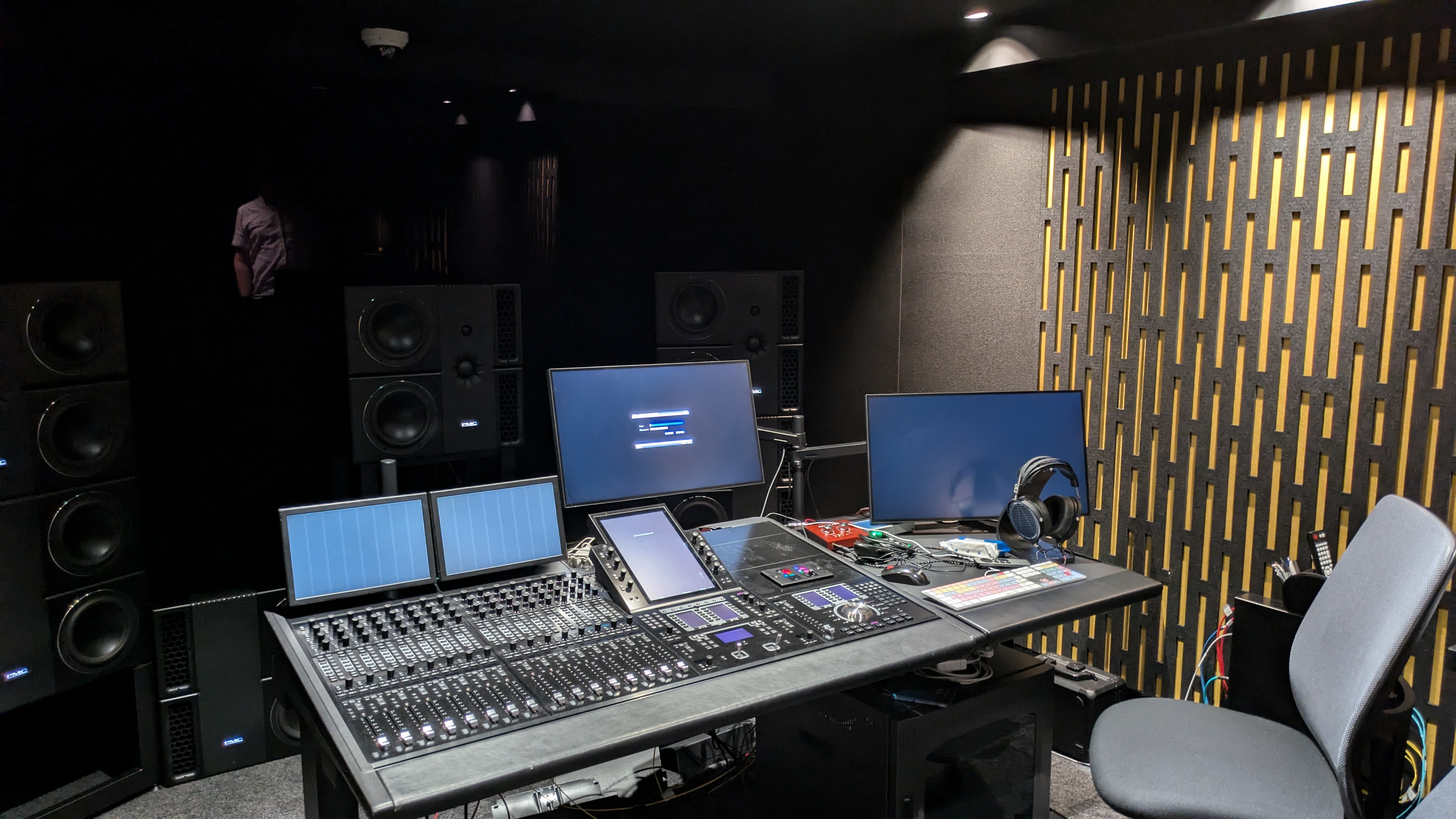I didn't care for Dolby Atmos music, but this one mind-blowing experience made me a believer
Music reimagined

Dolby Atmos is a phrase you’ll come across when you’re shopping for a new TV, soundbar or home theater speakers. An extension of the more traditional 5.1-channel surround sound, Dolby Atmos aims to create a more immersive experience by adding height channels to mixes, creating a ‘dome’ effect that envelops you.
Dolby Atmos has now become a staple feature of home theater tech through clever virtual processing by some of the best soundbars, such as the Sonos Beam Gen 2, and in physical form by some of the best Dolby Atmos soundbars, such as the excellent Samsung HW-Q990D, which uses up-firing drivers on the soundbar itself and the system’s wireless surround speakers.
When I’m reviewing a soundbar, connected to one of the best TVs that support Dolby Atmos, the Dolby Atmos sound adds a new layer to the viewing experience, with the added height effects in scenes such as the Batmobile chase in The Batman and the final Death Star attack inStar Wars: A New Hope getting an even more immersive quality.
It’s no surprise then that Dolby Atmos has extended beyond movies into music and also podcasts and audiobooks. Classic tracks are even now being given the Atmos treatment on streaming sites such as Tidal and Apple Music (you may see it referred to as Spatial Audio in some instances).
As widespread as it’s become, Atmos music has never convinced me. It’s fair to say I’ve always been more of a traditionalist, preferring listening to a set of the best stereo speakers hooked up to an amp while I crank out Born to Run by Bruce Springsteen for the hundredth time. For me, Dolby Atmos never added much to that experience, and in fact, I’ve thought it’s over complicated things at times. Call me old-fashioned!
But then, I had a chance to see what goes into the Dolby Atmos production process for music, podcasts and audiobooks at Dolby Europe’s HQ in Soho, London, and everything changed.
Where the magic happens

Dolby’s 9.1.4-channel Atmos production room is compact, cozy and perfectly set up for audio mixing. Something unsurprising when I saw how much work went into its 34-speaker reference theater.
My experience started, of all things, with a Dolby Atmos audiobook clip of a character time-traveling. As the time machine activated, a swirl of sound encapsulated the room, with pulsing noises and the calm voice of the time traveler creating a Doctor Who-esque atmosphere. Another character’s voice chimed in from behind, giving a real sense of space and involving me in the action. It really felt like a movie.
Shortly after, I heard a clip from another podcast/audiobook, this one a military drama where the thoughts inside a character’s head roamed around the room. I heard footsteps actually moving the length of the room as whispering, humming voices dotted all around.
It was amazing to hear these audiobooks take on a life of their own, giving me that same sense of immersion I’d felt watching movies with Dolby Atmos soundtracks.
Hit the music

Next came music. The first track that was played was Believer by Imagine Dragons. It’s a track with big production and a stadium-sized atmosphere and every element sounded balanced. The drums thumped the floor, hand claps were accurately placed at the side of the room and the layered vocals came at me from all around, engulfing the room and sounding incredibly clean.
It didn’t surprise me that a modern track like Believer sounded great in Atmos, but when the next track, Elton John’s Rocket Man, was queued up, I was curious to hear how an older track remixed for Atmos would fare. This was where my opinion of Dolby Atmos music really changed.
Rocket Man in Atmos conveyed the atmosphere of space and expanded it on a grand scale. The slide guitars used to create the sound of stars and ships panned from the back to the front of the room, passing overhead through the height channels. The bass and pianos sounded well-balanced and when a choir of voices subtly appeared in the mix, it was something I had never noticed before when listening to the track.
The space opera feel of Rocket Man being given the sense of scale that Elton John had intended when he first wrote it was, for me, the best demonstration of what Dolby Atmos can do for music. Crucially, the buttery smooth, warm quality of the original recording was still present – as if the original vinyl was playing on a Linn turntable through some Wharfedale speakers in a 1970s UK living room.
As this all happened, a visual display above the production room’s mixing board followed the movement of the sound elements across the speakers, showing just how much detail went into a Dolby Atmos mix.
Final thoughts

My time in Dolby’s Atmos production room finally opened my mind to Dolby Atmos music. To get its true benefits, however, you need a system that can adequately play it to its full capabilities, with full surround sound and overhead height speakers, and that admittedly won’t be cheap.
Does this mean I’m done with stereo? No, not by a long shot. But it does mean I want to listen to more Dolby Atmos music – someone get me some Bowie. When it comes to Atmos music, as the Monkees once sang, “now I’m a believer”.
You might also like
Get daily insight, inspiration and deals in your inbox
Sign up for breaking news, reviews, opinion, top tech deals, and more.

James is the TV Hardware Staff Writer at TechRadar. Before joining the team, he worked at a major UK based AV retailer selling TV and audio equipment, where he was either telling customers the difference between OLED and QLED or being wowed by watching a PS5 run on the LG 65G2. When not writing about the latest TV tech, James can be found gaming, reading, watching rugby or coming up with another idea for a novel.